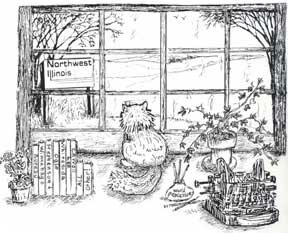
Discover rewarding casino experiences. 
|
And a pearl develops, a positive note, but still irritating to the clam. Not every clam makes a pearl but at one time clams were a major industry here in the Northwest of Illinois and not just for pearls ... Many other products were created by the clam. Although it was the pearl in clams in Yellow Creek in Stephenson County that actually named Pearl City back in the last decades of the nineteenth century. Most local streams of all sizes produced clams in the 1890’s and for the next forty years, drawing “clammers” from near and far. Clammers formed camps along the streams and were numerous on the Rock River, some camps numbering as many as two hundred tents or shacks, all ages. Kids loved the gypsy-like atmosphere although they were put to work here and there. Clamming wasn’t a complicated business ... Nets, hooks, rakes but a crude boat was necessary, one about 16’ to 24’ long cobbled together so it would float. An inboard motor carried the flat-bottomed clam boat rapidly upstream so it could drift back down. The picture here is from the Ogle County 1976 history in the heyday of clamming on the Rock River. Two long bars or iron pipes were attached to the sides of the boat to be extended out into the water. Each bar had at four to five inch intervals, short chains or heavy twine, at the ends of which were usually handmade steel hooks that were to be dragged along the bottom of the stream, hopefully, to snag a clam with its shells partially opened. Nets ad rakes supplemented the drag line. About every fifteen minutes the boat would stop and the clammer or helper would disengage the clam from the hook. Clams, once clamped on something were difficult to remove so it was an arduous job. If it was a successful catch, there might be twenty-five clams or so on the line. Dip, drag, remove clams to the bottom of the boat, over and over. It seems a slow way to make a living but in a week’s time a clammer could collect a ton of clams, believe it or not. The money from clamming was in addition to farming or shoveling coal or whatever. Some boats had a device attached to the front called a “mule” that was a board about two feet wide and about twelve feet long covered with canvas. It was raised or lowered into the water according to its depth to help maneuver the boat. The depth of the water could change drastically when the gates at the dam at Rockford were shut for some reason. Downstream the river would lower so that several feet of shoreline would be exposed and clams would be lying all along it. Clammers could walk along picking them up, enough sometimes to fill a five gallon pail ... Easy clamming, that was. The clammers day began before daybreak and didn’t end until the sun went down. During that time all the processes of clamming had to be done quickly ... And there were several on the agenda. A break would occur about ten or eleven o’clock in the a.m., the hottest part of the day during which time, one of the many jobs other than clamming might take place. Large cookers were built over a large fire in the camp. The clams would be placed in the boiling water long enough for the meat to be loosened from the shell, then it was extracted from the shell by the clammer or his helper/family. Shells would be thrown on a pile that might reach six to eight feet tall and forty foot in diameter. As in all of Nature, clams came in more than one type which were separated when thrown on the pile ... They brought differing prices when the shell/button buyer came. The least desirable clam was the “elephant ear,” larger but thin shelled. Because the clammer was paid by weight, the “ear” didn’t bring as much in pennies! There was the “blue point” which had a bluish tint. Then the mollusk and “rough shell” or “pimple back” clam. The “three ridge” was the most sought after because it was heavier and more thick. Buyers from button factories roamed the river banks all over the Midwest seeking the unique crop whose harvests lasted only about four months a season. At their highest selling point, clams would be sold for $110 a ton. A clammer could harvest about a ton a week. “Season” lasted about forty years, 1890 to 1940. Following extraction of the meat and separating the clams by types, the meat could also be sold ... Those clams were sure all recyclable ... The meat could become fish bait that fishermen swore by or sold to farmers for hog feed. The hogs seemed to thrive on it but, unfortunately, on that diet the pork meat would have a “fishy” flavor. Eventually it was discovered that if the hogs were given a menu exclusively of corn for about a month in advance of the clam season, the hams and bacon, etc. were of their true taste. The clam shell wasn’t discarded without being closely examined for the pearls for which it became famous locally. They weren’t that common, however. A clammer might find only two or three in a season ... Some tiny or some weighting as much as twenty grains and bring at the time, $200 to $400 a piece. “Slugs” were also a yield of the clam. Slugs were irregular, imperfectly shaped pearls and sometimes used, too, as jewelry—”baroque.” They’d being only two to three dollars an ounce—a teaspoonful. The perfect pearl, however, was found now and then. Some examples remain. The heyday of the clam for buttons lasted only until about the mid-1930’s. The price dropped to $30 a ton. Boats and motors were sold, if possible. It was after all, the depth of the Depression. It wasn’t just the Depression that killed the shell button industry but something that took its place. Can you guess? —NEXT WEEK.
|




